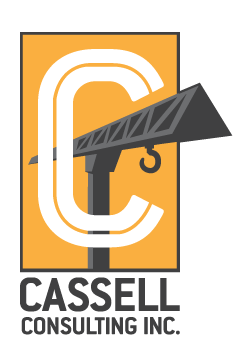I was intrigued by the request from Houston Neal of SoftwareAdvice.com, to comment on his company’s estimating software survey. As it was a topic near and dear to us and right in our wheelhouse, so I agreed. The link to the survey follows at the conclusion, but first a few comments:
The survey had a surprising number of participants by contractors earning < $5 mm/year, (almost half of the roughly 100 who participated), and about half as many were firms with > $ 100 mm, so the sample seems reasonably representative of the market as a whole, and sufficiently diverse to produce useful results. One number that didn’t surprise was the leading estimating sofware isn’t estimating software at all, but good ol’ spreadsheets…(still)….and yet… While I did say not surprising, it is in my opinion, more proof that we are in a very conservative industry, even to a fault. For all the forward-looking companies who embrace BIM, Tablets & Time Capture technologies, there are 2 or 3 who still use spreadsheets to estimate, and paper for Daily Reports & Timesheets. As the presdient of a construction technology consulting firm, it never ceases to amaze me how backward-looking some of us are. If your company does use a dedicated estimating system, kudos on being in the game. Regardless of which brand your company chooses, I would argue that any of the top choices (mc2, Sage, Winest, US Cost, Heavy Bid, Hard Dollar) is better than spreadsheets.. I would say that you can’t make a mistake to buy one, and that the critical inch to successful implementation of that system is management’s commitment to see the process through, and require that its personnel embrace its adoption.
Interestingly, the survey also showed that the 50% of the diehard companies still using spreadsheets reported dissatisfaction with their results, compared to only 20% of the companies using estimating software. So for the survey group, 80% satisfaction vs. 50% supports our opinion that adopting estimating software is worthwhile, and enhances the bottom line. But wait, there’s more. System users produced bids 20% faster than spreadsheet users, (8.5 days average vs. 10.5 days). And while the percentage of overbidding was equal among systems and spreadsheets, the percentage of underbidding was triple among the spreadsheet crowd. That is perhaps the best reason to invest in an estimating system, and matches my own personal experience. (Early in my contracting career in Hawaii, I was successful bidder on a project, only to find that a line in my my spreadsheet that appeared to be in the total, wasn’t. Ouch. And that amount was coincidentally the cost of the estimating software that I hadn’t purchased. The following week, the company’s checking account was $20,000 lighter, $10k for the missed bid item and $10k for the software I’d just purchased, determined to that it would never happen again!) I will admit that the learning curve was not without frustrations, but despite some hiccups getting going, the decision was good for the company over time. I doubt we could have managed our growth, without the controls our estimating and jobcost software offered us.
The survey has some other interesting metrics that I won’t discuss in detail, including estimates per month, average dollar value, factors for not bidding more projects, top estimating challenges, and a few more. I was most surprised that the most common estimating errors were caused by material price increases, an issue which was especially prevalant back in the pre-recesssion era before 2008. There were months when steel, copper, drywall, and pipe prices were so volatile that construction contracts often contained materiial escalation clauses, which spread the risk of the rising commodities. The recession cooled most of the erratic and unpredictable material spikes, so it surprises me to see that factor leading the list.
The last section dealt specifically with feedback from the estimating software users. The biggest benefits of a dedicated system included process standardization, increased speed and accuracy. At the bottom of benefits list was rapid budget creation, which tells me that unfortunately, some companies stop short of realizing one of the biggest paybacks of investing in a system. (This matches our experience as consultants, and it’s one of the oft-hidden pearls that we make sure we teach our clients). Ease of use tops the feature satisfaction list, while 3-D takeoff is the lowest rated. Email and phone support topped the list of software providers’ services, while Training and the User Conference were at the bottom of the list. Are you listening, Software Companies? Customer dissatisfaction with training is the niche has become the backbone of our company, and I wouldn’t blame the software providers. A small company like ours is much better positioned to provide the flexible, customized services that each company’s unique strengths and culture requires.
I told Houston I hoped a subsequent effort would include include which software brands had achieved the highest market penetration, a useful metric missing from the current one. Overall I found the survey interesting, useful, and generally consistent with my consulting experience. The more companies that take an active interest in pursuing & publishing useful information about our industry and its technology use, the better.
Please check out the survey for yourself, at:
http://blog.softwareadvice.com/articles/construction/2012-construction-estimating-benchmark-report-1050212/




